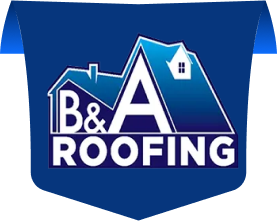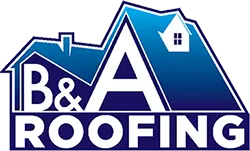As a homeowner, you know that a leaking roof can quickly turn from a small issue into a major problem. Whether you’ve noticed water stains on your ceiling or heard those dreaded dripping sounds during a rainstorm, finding the source of the leak is crucial. Identifying it early can help prevent expensive damage and protect your home’s integrity. To help you out even more, this blog post will teach you how to find a roof leak before it gets worse.
What Are The Different Signs Of A Roof Leak?
Let’s start by exploring the various signs that can indicate a roof leak:
Interior Signs of a Roof Leak
Now, let’s take a closer look at how leaks might show up inside your home:
1. Water Stains on Ceilings or Walls:

Yellow or brown stains often mean water is seeping in from the roof. These stains may feel damp, spread over time, or cause paint and wallpaper to peel.
2. Dripping Water or Damp Spots:
If you notice water dripping during or after rain, it’s a clear sign of a leak. In some cases, moisture may appear as condensation or damp patches on walls and ceilings.
3. Mold or Mildew Growth:

Excess moisture from a leak can lead to mold, especially in areas like the attic or along exterior walls. Mold growth is a strong indicator of hidden water damage.
4. Peeling or Bubbling Paint:

Paint that blisters or peels off walls and ceilings signals trapped moisture caused by a leak.
5. Rusty or Wet Pipes:
If pipes in your attic appear damp or rusty, it may mean water is getting in through the roof and affecting nearby structures.
6. Light Coming Through the Roof:
Small gaps or holes in the roof allow sunlight to shine through, which also means water is able to enter during periods of heavy rain.
7. Musty Smells:
A persistent damp or musty odor, especially in the attic or upper floors, can indicate moisture buildup from a hidden leak.
8. Sagging Ceilings:
A ceiling that appears swollen or starts to sag suggests significant water buildup, which can weaken the structure and pose a safety risk.
9. Rising Energy Bills:
If your heating or cooling costs suddenly increase, water damage in your roof may reduce your home’s insulation efficiency.
Exterior Signs Of A Roof Leak
Next, we’ll discuss the signs you might spot on the outside of your roof that indicate a leak is occurring:
1. Missing or Damaged Shingles:

Cracked, curled, or missing shingles create openings for water to seep in. Regular inspections can help prevent leaks.
2. Clogged or Damaged Gutters:

Blocked gutters can trap water on the roof, causing it to seep into your home. Rusted or sagging gutters may also lead to leaks.
3. Worn or Cracked Flashing:
Flashing around chimneys, vents, and skylights helps seal openings in the roof. If it’s damaged or missing, water can easily enter.
4. Excessive Granules in Gutters:
If you notice a buildup of shingle granules in your gutters, your roof may be aging and becoming more vulnerable to leaks.
5. Chimney Damage:
Cracked bricks, deteriorated mortar, or loose flashing around the chimney can allow water to enter the home.
6. Condensation in the Attic:
If your attic has excessive moisture, especially on the underside of the roof, poor ventilation combined with a roof leak may be the cause.
How To Detect Roof Leaks
Beyond inspecting the interior and exterior of your roof, there are a few other things you can do in order to find roof leaks.
1. Check the Attic for Moisture
Go into the attic and inspect the underside of the roof. Look for damp insulation, water trails, or mold, especially near vents, chimneys, and roof joints. If it’s raining, listen for dripping sounds to help pinpoint the leak in the roof. Any soft or sagging spots in the roof decking indicate prolonged exposure to moisture.
2. Use the Hose Test
If you can’t find the leak visually, use a garden hose to simulate rain. Have someone inside watch for drips while you slowly spray small sections of the roof. This method helps identify hidden roof leaks, allowing you to focus on the affected area before making repairs.
3. Trace Water Stains to the Source
Water often travels along beams and rafters before appearing as stains on ceilings or walls. Start at the visible damage and follow the water trail upward to locate the roof leak. If the leak is severe, removing affected drywall or insulation may be necessary to track its origin.
Effective Professional Methods for Roof Leak Detection
While taking on an inspection yourself can be helpful for determining where roof leaks are occurring, having professional help can be especially important. Here is what a professional can provide as your roof inspector:
Fluorescent Dye Testing
This method involves damming the suspected area and adding in fluorescent dye-mixed water. After a bit of time has passed, professionals will use a UV or black light to check for glowing areas inside. This glow represents the area where a leak is occurring.
Electronic Leak Detection (ELD)
Ideal for exposed, non-conductive membranes, this process creates an electrical field to identify leakage points.
Thermal Imaging
This technique uses infrared technology to detect temperature differences. Wet areas appear darker, making it easier to find hidden roof leaks and moisture buildup without damaging the roof.
Tracer Gas Testing
This process involves filling small gaps with tracer gas, which is detected from above. This method is highly effective for pinpointing leaks that aren’t visible to the eye.
Drone Inspection
A drone captures high-resolution images and videos of hard-to-reach areas, helping assess roof leak repairs without climbing up.
What to Do Once You Find a Leak
Now that you know how to find a leak, here’s what to do when you spot one:
1. Protect Your Belongings
Move furniture and valuables away from the leaking roof. Use plastic sheets or tarps for items that can’t be moved.
2. Apply a Temporary Fix
Cover the affected area with a waterproof tarp and secure it with nails or heavy-duty tape to prevent further roof leaks.
3. Document the Damage
Take photos and videos for insurance claims and future roof leak repairs.
4. Call a Roofing Contractor
Contact a professional to assess the issue and provide a lasting solution to fix the roof leak.
5. Schedule Repairs
Work with the contractor to repair or replace the damaged section as soon as possible.
Need a Roof Fix? The Team at B & A Roofing and Gutters Has You Covered!
Concerned about hidden roof leaks or unsure about your roof’s condition? B & A Roofing and Gutters provides thorough roof inspection services to give you peace of mind. Our skilled professionals carefully assess your roof, identifying all the issues related to roof leaks and other vulnerabilities before they turn into expensive repairs. Don’t wait! Contact us today at (601) 520-3183 for a dependable roof inspection!


